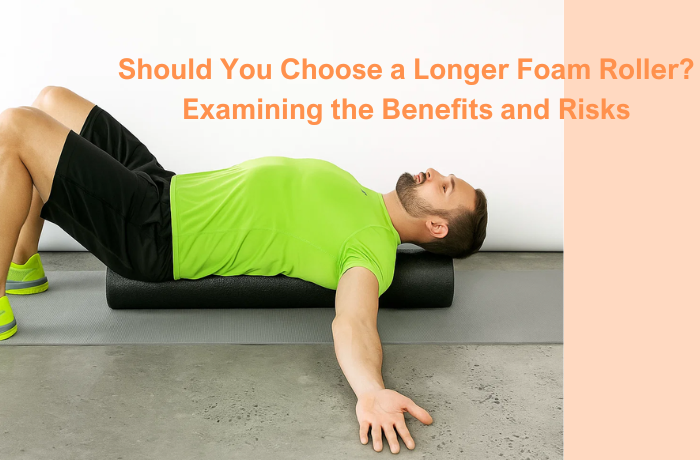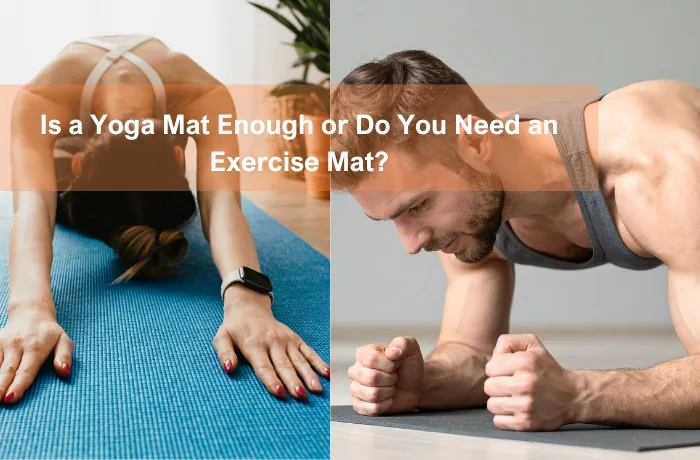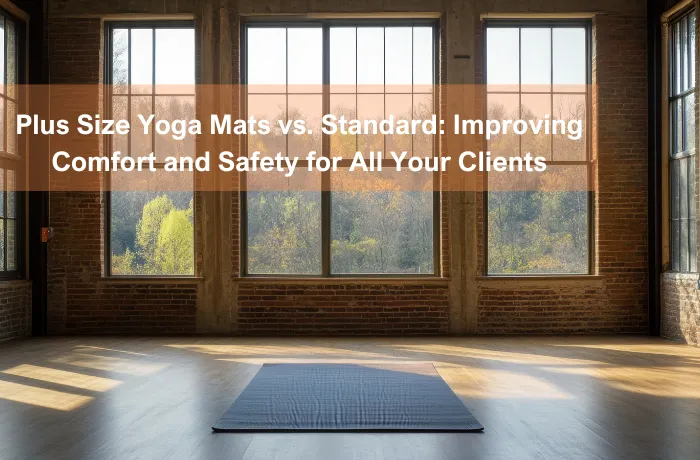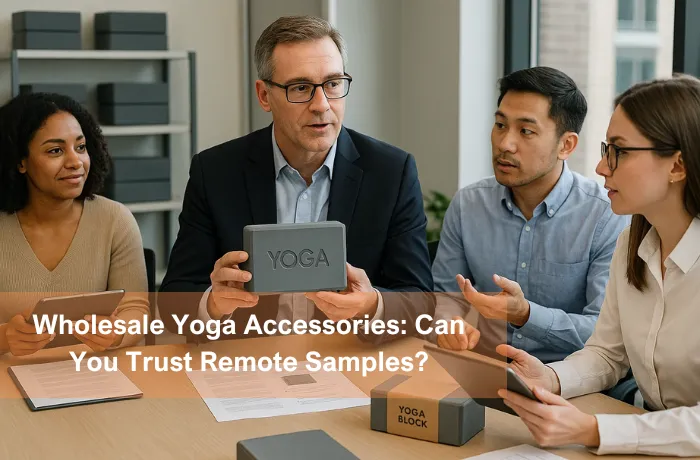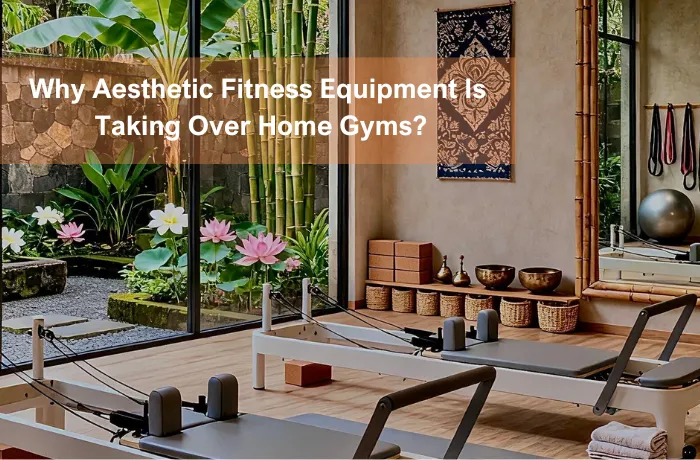If you wonder what is a foam roller, you are not alone. A longer foam roller can make foam rolling easier for big muscles like your back or legs. You get more support and better balance. Many people love longer foam rollers for full-body foam rolling. You might find it tricky to store or use in small spaces. Think about your fitness goals and space before you pick a longer foam roller. Foam rolling helps you feel better and move easier.
Key Takeaways
- Longer foam rollers give more support and balance. They are good for rolling big muscles like your back and legs.
- You can save time because you can roll both legs or your whole back at once. This helps you recover faster and become more flexible.
- Longer rollers are good for beginners. They give you more stability and help you learn foam rolling in a safe way.
- These rollers need more space and are harder to carry. Think about where you will store it and if you need to travel with it before you buy one.
- Picking the right foam roller size depends on your fitness goals, your body size, and how much space you have. This helps you get the best results.
What Is a Longer Foam Roller?
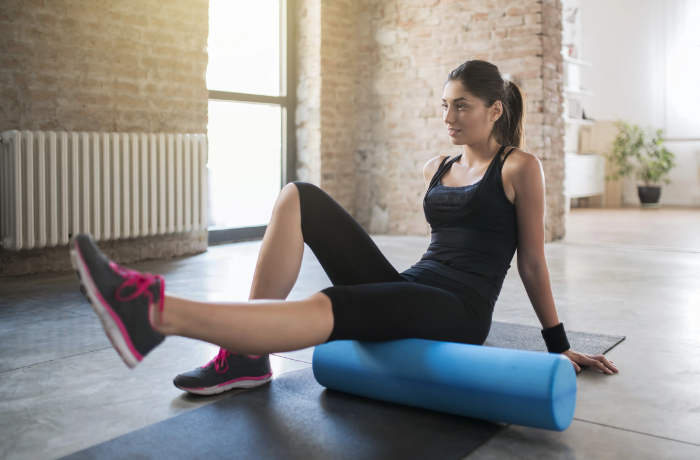
Typical Size and Features
When you think about what is a foam roller, you might picture a simple tube. But not all foam rollers are the same. A longer foam roller usually measures about 36 inches in length and has a diameter of 6 inches. This size gives you a bigger surface area, which helps when you want to roll out large muscle groups like your back or legs. You can even roll both legs at once, which saves time and feels more stable.
Most longer foam rollers use high-density materials like expanded polypropylene (EPP) or ethylene vinyl acetate (EVA). These materials keep the roller firm and supportive, even if you use it every day. Some rollers feel softer, while others feel more solid. If you are new to foam rolling, you might like a softer roller made from polyethylene (PE). If you want something that lasts longer and holds its shape, go for EPP or EVA.
Here’s a quick look at common foam roller sizes and their uses:
| Foam Roller Length | Description and Use Case |
|---|---|
| 6 cm | Great for small spots like hands or face. |
| 15 cm | Easy to carry, good for feet and arms. |
| 30 cm | Classic size for full-body massage. |
| 45 cm | Longest, best for big muscle groups and Pilates. |
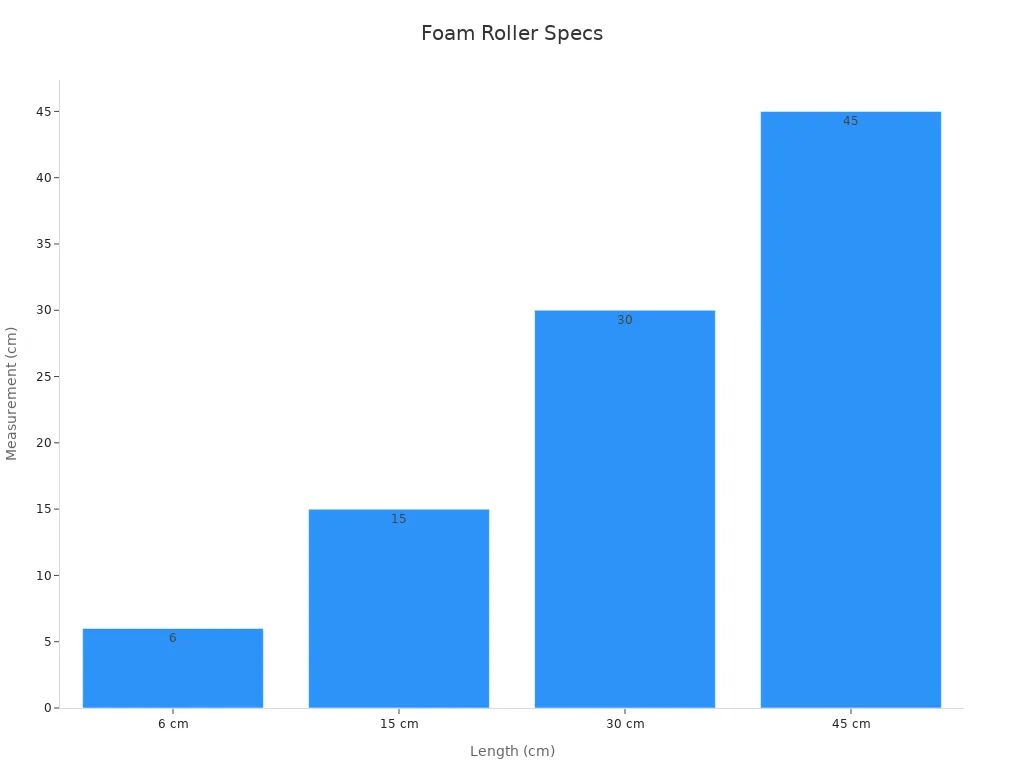
Tip: If you want more stability or need to support your whole back, a longer foam roller works best.
How It Differs from Other Foam Rollers?
You will notice some big differences between longer foam rollers and shorter ones. The main thing is the extra length. With a longer foam roller, you get more support for your body. This makes it easier to balance, especially if you are just starting out. You can lie on it lengthwise for spine exercises or use it for Pilates and yoga.
Shorter foam rollers, like the 15 cm or 30 cm ones, work well for travel or for targeting small areas. They fit in gym bags and take up less space at home. But they do not give you the same stability or let you roll both legs at once.
Here are a few ways longer foam rollers stand out:
- They cover more of your body at once.
- They help you stay balanced during exercises.
- They support heavier users without losing shape.
- They are perfect for full-body routines and postural work.
If you have space at home and want to focus on big muscle groups, you will love the feel of a longer foam roller. If you need something small and portable, a shorter roller might suit you better.
Advantages and Disadvantages
When you look at foam rollers, you might wonder if a longer foam roller is the right pick. Let’s break down the advantages and disadvantages so you can make a smart choice.
Benefits of a Longer Foam Roller
A longer foam roller brings a lot of benefits to your fitness routine. You get more support, which helps you feel steady while you roll. This makes it great for beginners who want to learn foam rolling without worrying about balance. You can use it on almost any body part, but it really shines when you work on big muscles like your back, legs, and shoulders.
Here are some key benefits you’ll notice:
- You can roll out both legs or your whole back at once. This saves time and feels more stable.
- The extra length lets you do broad, sweeping motions. These motions help with muscle relief and boost flexibility.
- Longer foam rollers work well for self-myofascial release. This means you can improve circulation, help your muscles recover, and move better.
- If you sit a lot or play sports, you’ll find that a longer foam roller helps you warm up before workouts and recover after.
- Many beginners start with longer, softer foam rollers. These help you learn the right way to roll and build up your tolerance.
Tip: If you want to target large muscle groups and improve your performance, a longer foam roller is a solid choice.
Drawbacks to Consider
Even though longer foam rollers have many benefits, they also come with some disadvantages. You need to think about these before you buy one.
- Storage can be tricky. Longer foam rollers take up more space in your home or gym bag.
- They are not easy to carry around. If you travel a lot or want to bring your roller to the gym, a shorter one might fit better.
- Targeting small areas, like your arms or feet, can feel awkward. The extra length makes it hard to focus on tiny spots.
- Some exercises need a smaller roller for better control. You might find it tough to use a longer foam roller for detailed work.
Here’s a quick table to help you compare the advantages and disadvantages:
| Advantages | Disadvantages |
|---|---|
| Great for large muscle groups | Harder to store |
| Stable and beginner-friendly | Not very portable |
| Versatile for full-body routines | Awkward for small areas |
| Helps with performance and recovery | Less control for detailed exercises |
When you weigh the advantages and disadvantages, think about your space, your goals, and how you plan to use your foam roller. If you want better performance and full-body support, a longer foam roller could be your best friend. If you need something small and easy to carry, you might want to look at other options.
Longer Foam Roller for Recovery
Muscle Relief and Flexibility
You want your body to feel good after a tough workout. Foam rolling helps you with recovery by easing muscle soreness and making your muscles less tight. When you use a longer foam roller, you can cover more of your body at once. This makes it easier to work on big muscle groups like your back, quads, and hamstrings. You can use foam rolling after exercise to help your muscles relax and start the regeneration process.
Many people use foam rolling as a form of self-massage. You roll slowly over sore spots and let the pressure help with myofascial release. This means you break up knots and help your muscles move better. If you want to improve mobility, try adding foam rolling to your routine. You will notice that your body feels looser and you can stretch further.
Tip: Try foam rolling for a few minutes after your workout. You may feel less muscle soreness the next day and enjoy faster recovery.
Spinal and Postural Support
A longer foam roller gives you great support for your spine. You can lie on it lengthwise and let your back relax. This helps with postural support and can make your back feel better after sitting all day. Foam rolling along your spine can help with recovery by loosening tight muscles and improving your posture.
If you want to work on your mobility, use the roller to open up your chest and shoulders. This can help with regeneration and make you feel more balanced. Many people find that foam rolling helps with post-workout recovery, especially when they focus on the back and shoulders. You can use the roller to stretch, relax, and support your body as you recover.
Here’s a quick list of what you get with a longer foam roller for recovery:
- Better support for your spine
- Easier post-workout recovery
- Less muscle soreness
- Improved posture and mobility
- Faster regeneration after tough workouts
Longer vs. Shorter Foam Rollers
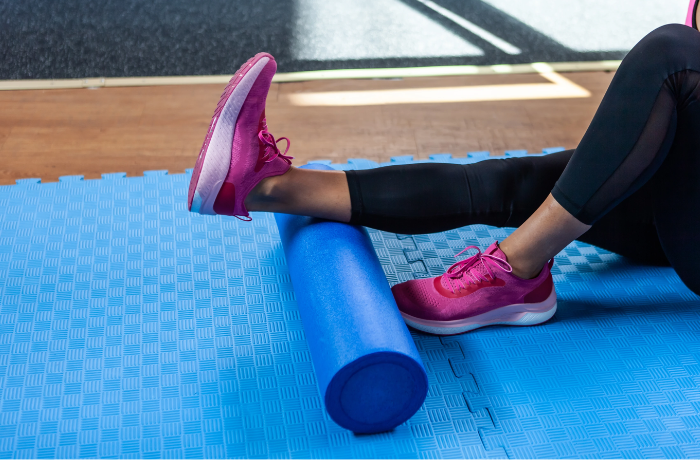
Comparison Table
You might wonder how longer foam rollers stack up against shorter ones. Here’s a table to help you see the main differences:
| Type of Foam Roller | Best For | Portability | Stability | Space Needed | Recovery Use | Performance Boost |
|---|---|---|---|---|---|---|
| Longer (36″+) | Full-body, big muscles | Low | High | More | Excellent | Great |
| Standard (18″-24″) | Most users, all-around | Medium | Medium | Medium | Good | Good |
| Shorter (12″ or less) | Travel, small areas | High | Low | Less | Targeted | Limited |
Tip: If you want to focus on recovery and performance for your whole body, longer foam rollers give you more support and coverage.
Who Should Use Each Type?
You have many choices when it comes to foam rollers. Picking the right one depends on your goals, your body, and your space.
- Longer foam rollers work best if you want full-body foam rolling. You get great stability, which helps if you are new to foam rolling. These rollers help with recovery after tough workouts and boost your performance by letting you roll out big muscle groups. If you have space at home, you will love how easy it feels to use.
- Standard foam rollers fit most people. You can use them for almost any foam rolling exercise. They work well for recovery and performance, and you can store them without much trouble.
- Shorter foam rollers shine if you travel a lot or want to target small spots like your arms or feet. They fit in a gym bag and take up little space. You might not get the same stability, but you can still use them for quick recovery or to loosen tight spots.
If you want to improve your performance, recover faster, and enjoy full-body foam rolling, go for a longer roller. If you need something portable, a shorter roller makes sense. Think about your space, your needs, and how you want to use foam rollers. That way, you can pick the best tool for your fitness journey.
Choosing the Right Size
Assessing Your Needs
Choosing the right foam roller starts with thinking about your goals. Do you want to improve mobility, help your muscles recover, or just relax after a long day? You should also look at your body size and the space you have at home. If you plan to do full-body exercises with a foam roller, a longer roller gives you more support and makes balancing easier.
Physical therapists often check how well you move before they suggest a roller. They might use tools like range of motion tests or movement screens. Most therapists recommend full-size rollers (36 inches long, 6 inches in diameter) for general use. These work well for big muscle groups and help you do many types of foam rolling. If you travel a lot or want to target small areas, a shorter roller might fit your needs better.
Remember: There are no strict rules for picking a foam roller size. You can try different lengths to see what feels best for your body and your favorite exercises with a foam roller.
Tips for First-Time Buyers
If you are new to foam rolling, you might feel unsure about what to buy. Here are some tips to help you get started:
- Start with a soft foam roller. This helps you avoid pain and lets your muscles get used to the pressure.
- Choose a smooth roller. Textured rollers with bumps or ridges can feel too strong for beginners.
- Look at the color. Lighter colors often mean the roller is softer, while darker ones are usually firmer.
- Think about your main goal. If you want to improve mobility or do effective training with a foam roller, a medium-density roller works for most people.
- Pick a size that matches your space. Standard rollers are great for home use, but smaller ones are easier to store or take to the gym.
- Price does not always mean better quality. Many affordable rollers work well for foam rolling and last a long time.
You can use foam rolling to massage sore muscles, increase flexibility, and boost circulation. Try different rollers to find what helps you feel your best. With the right choice, you will enjoy more comfort and better results from your exercises with a foam roller.
You have seen that longer foam rollers offer great benefits, like better support and easier full-body recovery. They help you target big muscles and improve your range of motion. Studies show that the right roller size and density can boost recovery by up to 16%. Still, longer rollers take up more space and are harder to carry. Think about your goals, your space, and how you want to use your roller. When you choose what fits you best, you set yourself up for success!
FAQ
How do I clean my longer foam roller?
You can wipe your foam roller with a damp cloth and mild soap. Let it air dry before you use it again. Avoid soaking it in water. This keeps your roller fresh and ready for your next session.
Can kids use a longer foam roller?
Yes, kids can use a longer foam roller with adult supervision. Start with gentle pressure and simple moves. Make sure the roller fits their size. If you have any concerns, ask a coach or physical therapist for advice.
Will a longer foam roller help with back pain?
A longer foam roller can support your whole back. You can use it for gentle stretches and to relax tight muscles. If you have serious back pain, talk to your doctor before you start foam rolling.
How often should I use my foam roller?
You can use your foam roller every day or a few times a week. Listen to your body. If you feel sore, take a break. Regular use helps you stay flexible and recover faster.

